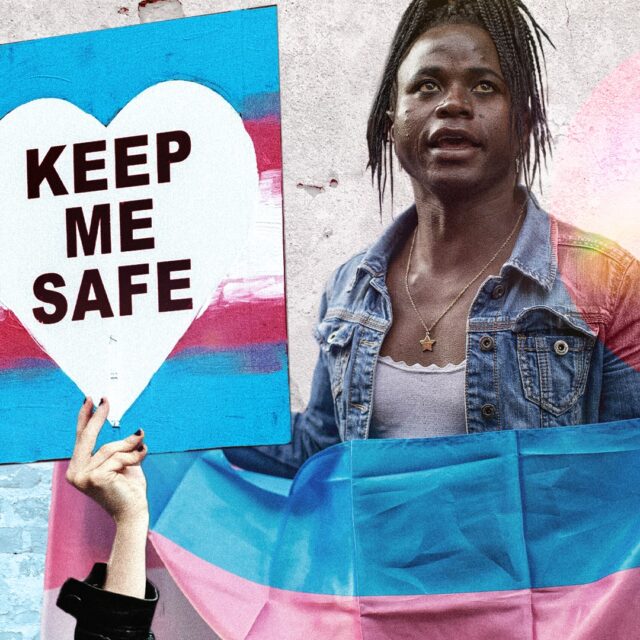Methodological Note for Dual Tragedies: Domestic Homicide-Suicides with a Firearm
On average, more than once per day in the United States, a tragedy occurs where a perpetrator kills an intimate partner, and then dies by suicide themself.1Violence Policy Center, “American Roulette Murder-Suicide in the United States,” editions 4–8, https://vpc.org/revealing-the-impacts-of-gun-violence/murder-suicide/. A five-year average was developed using 2011, 2014, 2017, 2019, and 2021 data. An average of 187 intimate partner murder-suicide incidents occurred over six months, an estimated 374 annually. Of these incidents, 93 percent involved a gun, and 95 percent had women killed by their male partners.2 Ibid. To document the circumstances and bring attention to the effects of these incidents, in 2024, Everytown for Gun Safety Support Fund conducted focus groups with 43 survivors of intimate partner homicide-suicide. The focus group participants were people who survived an attempted intimate partner homicide-suicide, family members, and individuals closely involved with the incident. Through these survivor interviews, we show the importance of understanding the risk factors for intimate partner homicide-suicide and ensuring effective implementation of laws that disarm domestic abusers.
The focus groups were approved by the Pearl IRB Institutional Review Board (IRB) to protect the rights, welfare, and confidentiality of participants.3The Pearl IRB Institutional Review Board protocol number is #22-AUHG-102. Participants in this study were recruited from Everytown for Gun Safety’s database of volunteers and through partner organizations that support survivors of gun violence. Participants received IRB-approved recruitment materials, such as the flyer with the study information, through email and text message. All participants signed a consent form, which included their rights, such as the ability to withdraw from the study at any time. In addition, the researchers provided mental health resources, and a licensed clinician on staff with Everytown was on the call to provide emotional support for participants. Following the focus group, every participant received a $25 prepaid Mastercard gift card for their participation in the study.
Prior to the focus groups, participants were asked to complete a survey with demographic and experience questions regarding their race, gender, sexuality, and geographic location in the United States. Participants then attended one of the five focus groups conducted by the researchers. Previous studies have shown that three focus groups are sufficient to capture nearly all themes.4Greg Guest, Emily Namey, and Kevin McKenna, “How Many Focus Groups Are Enough? Building an Evidence Base for Nonprobability Sample Sizes,” Field Methods 29, no.1 (2017): 3–22, https://doi.org/10.1177/1525822X16639015. Thus, five focus groups provided an adequate sample size to identify a range of themes, and researchers documented theoretical saturation5Barney Glaser and Anselm L. Strauss, Discovery of Grounded Theory: Strategies for Qualitative Research (Chicago: Aldine, 1967).
at this stage.
A focus group methodology was chosen as the most appropriate means to explore gun violence survivors’ experiences and thoughts on trauma. This methodology involves asking a group of participants open-ended questions in a supportive environment that encourages people to share their experiences and views.6Stephen Houghton, Kevin Durkin, and Annemaree Carroll, “Children’s and Adolescents’ Awareness of the Physical and Mental Health Risks Associated with Tattooing: A Focus Group Study,” Adolescence 30, no. 120 (1995): 971–89.
There are many advantages to focus group research. The method can yield detailed, in-depth information to study social processes,7Richard Krueger, Focus Groups: A Practical Guide for Applied Research (SAGE Publications, 2014). provide insights into complex social phenomena,8David L. Morgan, “Focus Groups,” Annual Review of Sociology 22, no. 1 (1996): 129–52, https://doi.org/10.1146/annurev.soc.22.1.129. and facilitate openness among participants as they provide their own language to describe their experiences9 Amy Slater and Marika Tiggemann, ”’Uncool to Do Sport’: A Focus Group Study of Adolescent Girls’ Reasons for Withdrawing from Physical Activity,” Psychology of Sport and Exercise 11, no. 6 (2010): 619–26, https://doi.org/10.1016/j.psychsport.2010.07.006.—this is particularly relevant for survivors who share experiences of gun violence. Thus, the focus group approach was used to gain a deeper understanding of the intersections of gun violence and trauma.
All focus groups were conducted by a trained researcher and a trauma-informed expert who have some training and experience in running focus groups. The focus groups were conducted and recorded on Zoom. Each participant was asked to rename themselves to protect their anonymity. Each session was also attended by an assistant who observed the focus group to aid in subsequent analysis. Focus groups lasted approximately one hour to one hour and 15 minutes. Data collected from the focus groups were professionally transcribed and then professionally analyzed using Nvivo qualitative coding software. A line-by-line analysis was completed to develop theoretical codes, and three to four focus groups were analyzed at a time to determine themes, categories, and connections across categories and themes.10Juliet Corbin and Anselm Strauss, Basics of Qualitative Research: Techniques and Procedures for Developing Grounded Theory, 3rd ed. (SAGE Publications, Inc., 2008), https://doi.org/10.4135/9781452230153; Barney Glaser, Doing Grounded Theory: Issues and Discussions (Mill Valley, CA: Sociology Press, 1998). Following the approach of researchers Tiggemann, Gardiner, and Slater, each theme from the focus groups was rated on frequency, intensity, extensiveness, specificity, and level of agreement.11 Marika Tiggemann, Maria Gardiner, and Amy Slater, “‘I Would Rather Be Size 10 than Have Straight A’s’: A Focus Group Study of Adolescent Girls’ Wish to Be Thinner,” Journal of Adolescence 23, no. 6 (2000): 645–59, https://doi.org/10.1006/jado.2000.0350. These approaches subjected the data to a systematic analysis of themes and concepts.
Everytown Research & Policy is a program of Everytown for Gun Safety Support Fund, an independent, non-partisan organization dedicated to understanding and reducing gun violence. Everytown Research & Policy works to do so by conducting methodologically rigorous research, supporting evidence-based policies, and communicating this knowledge to the American public.



